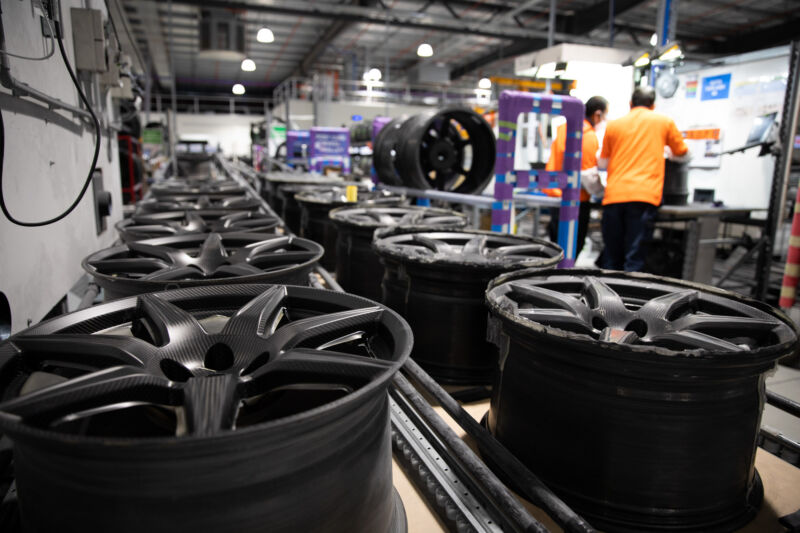
Enlarge / These carbon-fiber wheels have completed the molding process. (credit: Carbon Revolution)
You might have noticed that car wheels have gotten pretty large over the last few years. Designers love putting big wheels on cars, particularly big trucks and SUVs, because they help make big vehicles look smaller. Expect the trend to stick around as electric vehicles proliferate—it’s particularly effective at helping hide the extra height of the slab of lithium-ion cells between the axles.
The trouble is, big wheels might look good, but that aesthetic comes with a cost. A larger wheel is heavier, and it’s the very worst place to add pounds if you’re concerned about handling, since it is unsprung mass. This is why some wheels are made out of aluminum alloy instead of pressed steel, but even aluminum wheels weigh a lot if they’re 22 inches in diameter—or bigger. Enter Carbon Revolution and its carbon-fiber wheels, stage left.
Originally a plaything of the aerospace industry, the automotive industry first cottoned on to using carbon-fiber composites via racing. Extra weight is the enemy of a good lap time, and F1 designer John Barnard realized that he could build cars that were at least as strong as ones made from steel and aluminum, but far lighter. Initial safety fears from naysayers proved unfounded, and for several decades it has been the material of choice for prototype and single-seat race cars.




